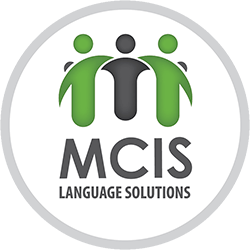What is Human Trafficking?
In Canada, human trafficking was included in the Criminal Code as a criminal offense in 2005. The Criminal Code definition of human trafficking contains three major elements:
- Control
- Exploitation, and
- Threat to safety
According to the Criminal Code, human trafficking means the recruiting, transporting, transferring, receiving, holding, concealing, harbouring, or exercising control, direction or influence over the movements of a person for the purpose of exploiting them or facilitating their exploitation.
Exploitation means causing a person to provide or offer to provide a labour or service by engaging in conduct that could reasonably be expected to cause the other person to believe that their safety or the safety of a person they know would be threatened if they did not provide the labour or service.
According to the law, no one can “consent” to any of the activities that are part of the definition of human trafficking.
Human trafficking is punishable by up to life in prison if trafficking involves kidnapping, aggravated assault, aggravated sexual assault or results in the death of the victim and up to 14 years in any other case . Benefitting from it is punishable by up to 10 years in prison and facilitating it is punishable by up to five years in prison. The punishment is increased in cases involving child victims and includes minimum sentences.
The Immigration and Refugee Protection Act applies when a person is trafficked into Canada from another country.
The United Nations Protocol to Prevent, Suppress and Punish Trafficking in Persons ratified by Canada in 2002 also defines trafficking in persons. Click on the link for more information.
The difference between domestic and international human trafficking
Being able to correctly distinguish between domestic and international trafficking is very important, because the needs of the trafficked persons will be different depending on their status in Canada. In addition, the legislation available for laying charges and prosecuting traffickers may be different.
Domestic human trafficking:
- Trafficking occurs entirely within the same country’s borders, from recruitment to exploitation, and no international borders are crossed.
- Trafficked person may be a Canadian citizen, permanent resident, visitor, temporary worker, student, refugee, or any person already in the country when they are recruited for the purpose of exploitation.
International human trafficking:
- Trafficking always involves the crossing of at least one international border.
- Trafficked person is transported through at least 2 countries – country of origin (source country) and the country into which they are trafficked (destination country).
- Often persons are transported through one or more additional countries (transit country) on their way from source to destination.
- Sometimes trafficked persons cross the border legally, with a valid visa and travel documents, and sometimes border crossing is illegal, with no documents or using fake ones.
The difference between human trafficking and migrant smuggling
Migrant smuggling involves facilitating the illegal entry of a person into a country they are not a national or resident of, with the consent of the person that is being smuggled, and usually involving dangerous travel conditions. This can happen clandestinely by using fake travel documents. It is usually a business transaction between two or more individuals involving a financial or material benefit for the smuggler. In other cases, smuggling may happen for the purpose of family reunification or removing persons from dangerous situations in their country of origin, such as political prosecution or a conflict situation. The transaction usually ends once the destination country has been reached and any fees have been paid.
Smuggling can sometimes turn into human trafficking, when the person that initially consented to the transaction is later deprived of their freedom and forced into an exploitative situation once they reach the destination country. However, this needs to be determined on a case-by-case basis.
Call 911 if you suspect someone has been trafficked and is in immediate danger. If your community does not have 911 services, call your local police.
Call your local police to report other suspected cases of human trafficking or contact Crime Stoppers to report anonymously.

